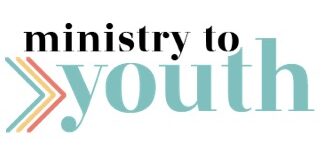Why Timing is Everything in Youth Ministry
![why-timing-is-everything-in-youth-ministry]()
Is there a “best” time for your youth ministry’s events and programs?
I don’t know that I’ve seen this talked about very much, but it turns out that when we schedule our events, it does an impact on how many students actually show up.
Logically, we know that this is true. Doing a Bible study at 4:00 a.m. on a Tuesday will probably attract fewer students than Wednesdays at 7:00 p.m.
But is 6:00 better than 7:00? Is Sunday better than Wednesday?
Well, that depends. But first, a disclaimer about radically changing your schedule based on a blog post:
We’re talking about very marginal gains here. The optimal time for your program might get an extra 5-10% of students to show up. It’s not nothing, but it’s not going to double your youth ministry overnight.
Furthermore, the work that goes into communicating the change and changing family schedules might mean that you don’t see a short-term increase.
Lastly, you need to be totally aware that a time change will absolutely cause you to lose students. Four more might show up, but two others might not; especially if you’re changing days. Be prepared to handle that and to continue to minister to the ones you lose.
But, if you’re planning a new program or making a drastic change to a current program, it might be worth a few minutes to make sure you dial in the right time.
Here are the rules that I’ve found that seem to work the best.
If families travel a long way to get to your church, don’t make them do that twice in one day.
In regional churches or super-rural churches, it’s not uncommon for many families to travel 20 minutes or more to get to church. If you’re running a Sunday night program, that might mean a 40-minute commute to services in the morning, 40-minutes to drop students off for youth group, and 40-minutes to pick them up afterward.
(You can alleviate some of the evening commute by giving parents something to do while their students are in youth group. Dependable WiFi and a Keurig will go a long way here.)
Especially, if your Junior High and High School groups meet at different times, it might help to sketch out what a driving week in the life of a family looks like if they’ve got students in both groups. Then start to figure out how you can help families cut commutes.
Start your weekday programs (at least) three hours after school gets out.
Unless your program is specifically run as an after-school program, you’ll want to provide a solid buffer between school and youth group. Three hours gives students plenty of time to get a bus ride home, do homework, eat dinner, and then get over to youth group.
It sounds like a lot, but when you consider that it’s not uncommon for students to ride a bus for half an hour and then include the drive to youth group, that leaves students just about two hours to do all of their homework and eat dinner.
If your program provides dinner, feel free to cut 30-40 minutes out of that guideline.
Round numbers seem to be more memorable.
There is a small influence here, but it’s here. 6:00 appears to be better than 6:30 and is definitely better than 6:15. I’m not sure if it’s because it’s easier to remember and communicate or what, but that’s why we say our Sunday morning program starts at 9:00 even though it doesn’t actually start until 9:10.
Your community context matters.
If you’re a largely white-collar congregation, parents will have a hard time getting their students to you at 6:00 when they’re not leaving the office until 5:00. If you’re in a farming community, you might have to end your programs earlier in the evening, because mornings come awfully early on the farm.
It’s not perfect, but it’s a start. And if you’re kicking off a brand new program, there are worse things to consider than the time that might be the most convenient for your families.
 Aaron Helman is on a mission to end youth worker burnout by providing the training and resources that you haven’t been taught… until now. Smarter Youth Ministry exists to help you learn how to manage their time and resources better so that you can do more ministry with less frustration. All of that having been said, you most likely know him as the creator of “Lamentation or Taylor Swift Lyric.”
Aaron Helman is on a mission to end youth worker burnout by providing the training and resources that you haven’t been taught… until now. Smarter Youth Ministry exists to help you learn how to manage their time and resources better so that you can do more ministry with less frustration. All of that having been said, you most likely know him as the creator of “Lamentation or Taylor Swift Lyric.”

